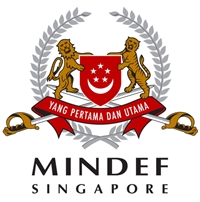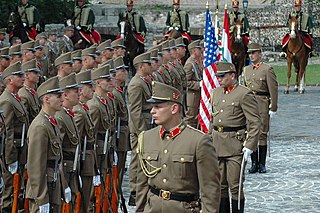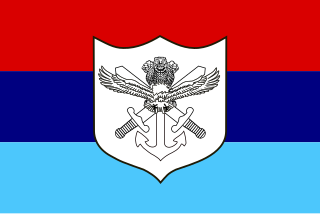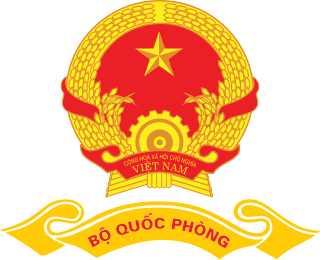
The Lithuanian Armed Forces are the military of Lithuania. The Lithuanian Armed Forces consist of the Lithuanian Land Forces, the Lithuanian Naval Force, the Lithuanian Air Force and the Lithuanian Special Operations Force. In wartime, the Lithuanian State Border Guard Service becomes part of the Lithuanian Armed Forces. A special security department handles VIP protection and communications security.

The Armed Forces of the Republic of Moldova consist of the National Army and the Trupele de Carabinieri under the Ministry of Internal Affairs. Until 2012, the Moldovan Border Police belonged to the armed forces.

The British Armed Forces are the military forces responsible for the defence of the United Kingdom, its Overseas Territories and the Crown Dependencies. They also promote the UK's wider interests, support international peacekeeping efforts and provide humanitarian aid.

A commander-in-chief or supreme commander is the person who exercises supreme command and control over an armed force or a military branch. As a technical term, it refers to military competencies that reside in a country's executive leadership, a head of state, head of government, or other designated government official.

The Ministry of Defence is a ministry under the Government of Singapore responsible for overseeing the national defence of Singapore.

The Czech Air Force is the air force branch of the Army of the Czech Republic. Along with the Land Forces, the Air Force is the major Czech military force. With traditions of military aviation dating back to 1918, the Czech Air Force, together with the Slovak Air Force, succeeded the Czechoslovak Air Force in 1993. On 1 July 1997, the 3rd Tactical Aviation Corps and the 4th Air Defence Corps of the Czech Army were merged to form an independent Air Force Headquarters.

A guard of honour, honor guard or ceremonial guard, is a group of people, typically drawn from the military, appointed to perform ceremonial duties – for example, to receive or guard a head of state or other dignitaries, the fallen in war, or to attend at state ceremonials, especially funerals. In military weddings, especially those of commissioned officers, a guard, composed usually of service members of the same branch, form the sabre arch. In principle, any military unit could act as a guard of honour. However, in some countries, certain units are specially assigned to undertake guard of honour postings or other public duties. Republican guards, royal guards and foot guards frequently have ceremonial duties assigned to them.

The Ministry of Defence (MoD) is charged with coordinating and supervising all agencies and functions of the government relating directly to national security and the Indian Armed Forces. The President of India is the ceremonial commander-in-chief of the armed forces of the country. The Ministry of Defence provides policy framework and resources to the armed forces to discharge their responsibility in the context of the defence of the country. The Indian Armed Forces and Indian Coast Guard under the Ministry of Defence are primarily responsible for ensuring the territorial integrity of India.

The Indian Armed Forces are the military forces of the Republic of India. It consists of three professional uniformed services: the Indian Army, Indian Navy, and Indian Air Force. Additionally, the Indian Armed Forces are supported by the Central Armed Police Forces, Indian Coast Guard and Special Frontier Force and various inter-service commands and institutions such as the Strategic Forces Command, the Andaman and Nicobar Command and the Integrated Defence Staff. The President of India is the Supreme Commander of the Indian Armed Forces but the executive authority and responsibility for national security is vested in the Prime Minister of India and their chosen Cabinet Ministers. The Indian Armed Forces are under the management of the Ministry of Defence of the Government of India. With strength of over 1.4 million active personnel, it is the world's second-largest military force and has the world's largest volunteer army. It also has the third-largest defence budget in the world. The Global Firepower Index report lists it as the fourth most-powerful military.

A ministry of defence or defense, also known as a department of defence or defense, is the part of a government responsible for matters of defence and military forces, found in states where the government is divided into ministries or departments. Such a department usually includes all branches of the military, and is usually controlled by a defence minister, or secretary of defense.
The Ministry of Defence is the cabinet ministry of the Government of Sri Lanka responsible for implementation of government defence policy and acts as the overall headquarters of the Sri Lankan Armed Forces.

The Estonian Defence Forces is the unified military force of the Republic of Estonia. The Estonian Defence Forces consists of the Estonian Land Forces, the Estonian Navy, the Estonian Air Force, and the paramilitary Estonian Defence League. The national defence policy aims to guarantee the preservation of the independence and sovereignty of the state, the integrity of its land area, territorial waters, airspace and its constitutional order. Its main goals remain the development and maintenance of a credible capability to defend the nation's vital interests and development of the defence forces in a way that ensures their interoperability with the armed forces of NATO and European Union member states to participate in the full range of missions for these military alliances.

The Ministry of Defence is a Ministry of the Federal Government of Nigeria with the statutory responsibility of overseeing and supervising the Nigerian Armed Forces. The Ministry of Defence is headed by the Minister of Defence, a cabinet-level head who reports directly to the President of the Federal Republic of Nigeria. Its main mission is to provide administrative and support services, timely and effectively to enable the Armed Forces of the Federal Republic of Nigeria.

The Ministry of National Defence, alternatively the Ministry of Defence (MoD), fully the Ministry of Defence of the Socialist Republic of Vietnam, is the governmental ministry of the Socialist Republic of Vietnam that manages, coordinates and supervises military affairs, including all military units, paramilitary units, and similar agencies in the country. The major office of the Ministry of National Defence is located within the ancient Hanoi Citadel. The ministry is operated in compliance with the Constitution and Laws of the Socialist Republic of Vietnam, ideologically under the leadership of the Communist Party of Vietnam and the unified State management of the Vietnamese Government. It runs the People's Army Newspaper and the Military Broadcasting Center together with the Central Military Commission of the Communist Party of Vietnam. Besides press and media agencies, the Ministry of National Defence also owns and administers a number of enterprises, noticeably the Viettel Military Industry and Telecoms Group besides many core businesses of the Vietnamese defence industry.

Constantino Guveya Dominic Nyikadzino Chiwenga, is a Zimbabwean politician and former army general currently serving, since 2017, as the First Vice-President of Zimbabwe under President Emmerson Mnangagwa. In August 2020, he added the Health Ministry to his portfolio.

The Armed Forces of the Republic of Poland, Also called the Polish Armed Forces And popularly called Wojsko Polskie in Poland are the national armed forces of the Republic of Poland. The name has been used since the early 19th century, but can also be applied to earlier periods. The Polish Legions and the Blue Army, composed of Polish volunteers from America and those who switched sides from the Central Powers, were formed during World War I. In the war's aftermath, the Polish Army was reformed from the remnants of the partitioning powers' forces and expanded significantly during the Polish–Soviet War of 1920.

The Commander-in-Chief of the Sri Lankan Armed Forces is the ultimate commanding authority of the Sri Lanka Armed Forces, an executive role vested in the President of Sri Lanka.
In Myanmar, military rank system and insignia are used by the Myanmar Armed Forces, its auxiliary services, some government departments and some civilian organizations.

















